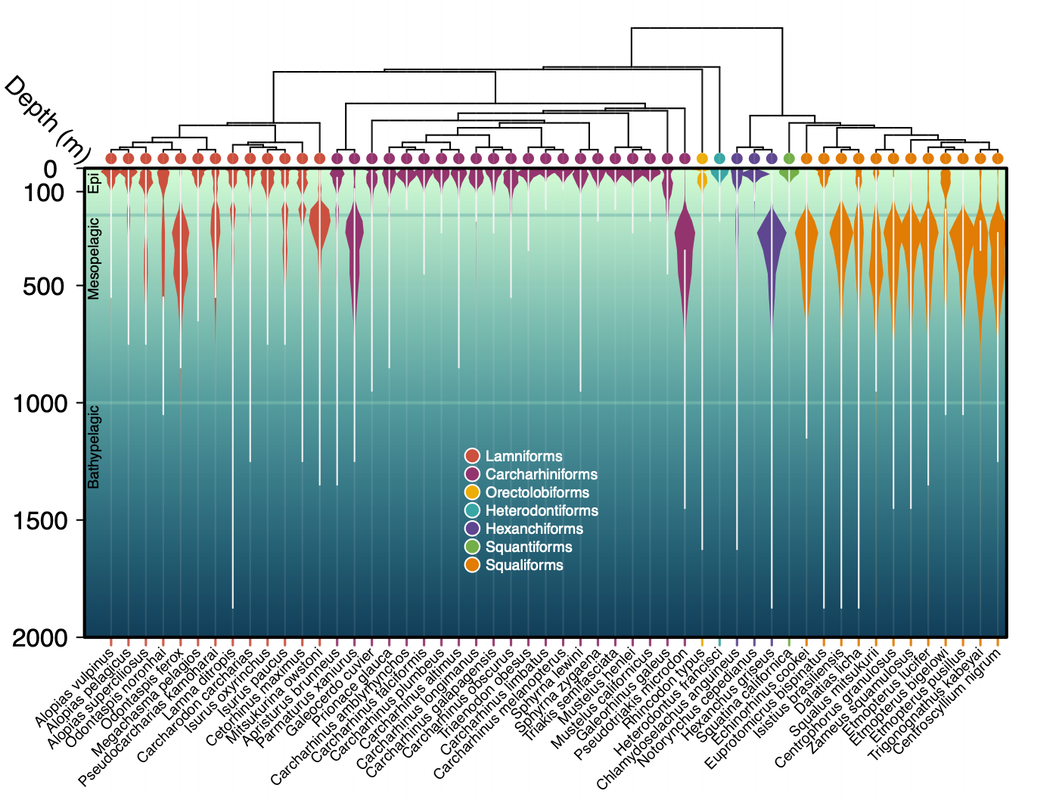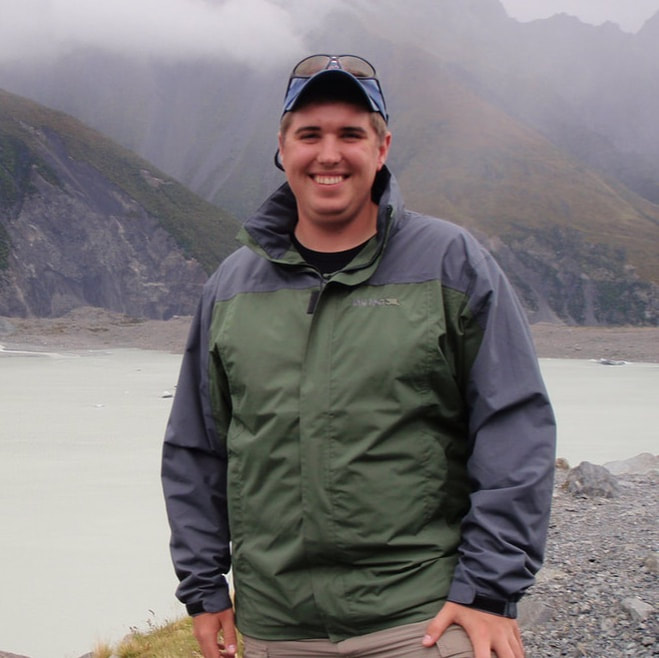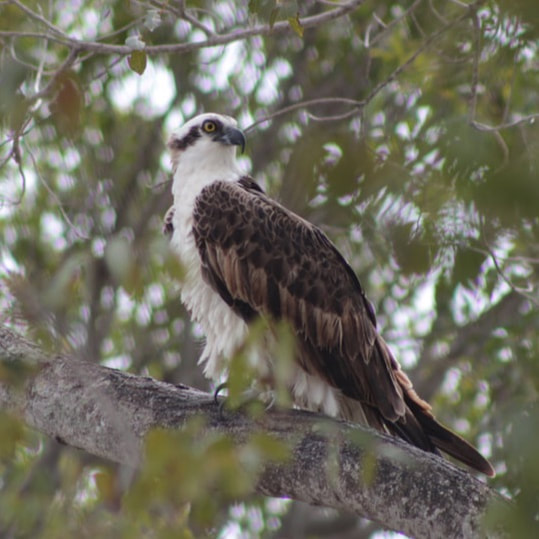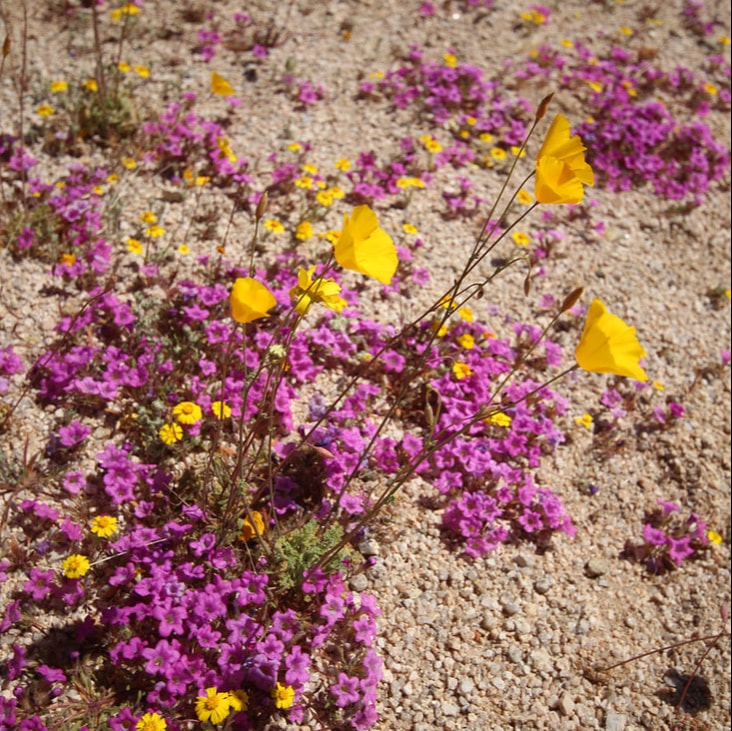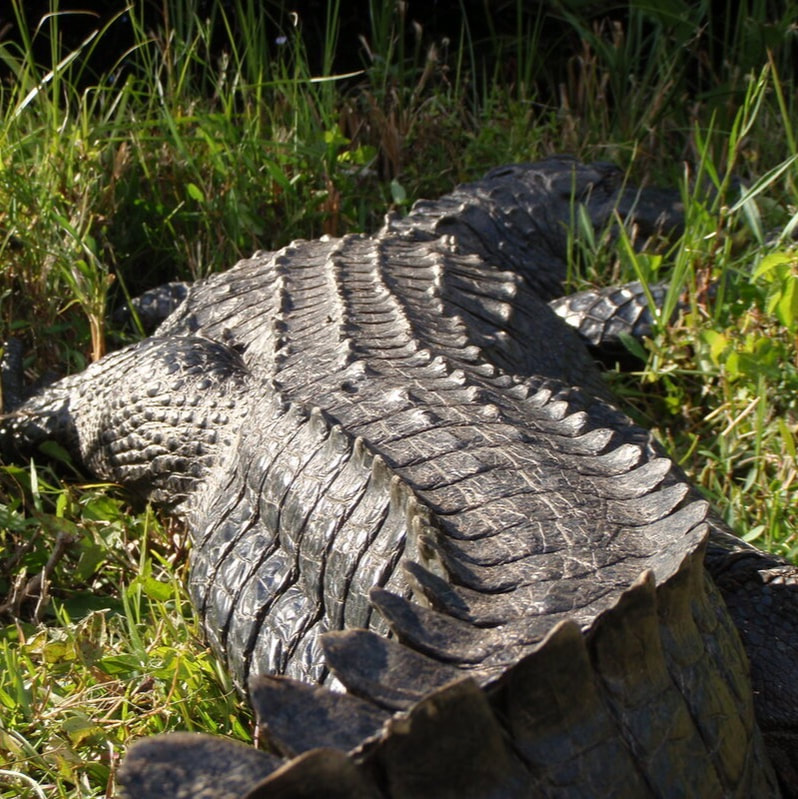Recent News
Just published in a special issue on "Predictive Biogeography" in Ecography is "Predicting time-at-depth weighted biodiversity patterns for sharks of the North Pacific." Built on the foundation of past publications for the North Pacific shark assemblage, we build a predictive model for estimating the amount of time sharks spend in different depths below the ocean's surface. We used published biotelemetry datasets and the species' reported depth range and habitat affinities to train our hurdle Ensemble Random Forest model. We then used this model to estimate where North Pacific sharks spend their time in the water column. Lastly, we compared taxonomic, phylogenetic, and functional trait biodiversity metrics between assemblages based on depth ranges and assemblages built on time-at-depth preferences. Accounting for a species' time-at-depth preference led to very different outcomes and showed that shark alpha-diversity peaks at the top of the epipelagic (surface) and at the upper edge of the mesopelagic zone (200-300 m).
About Me
|
I am a quantitative ecologist and fisheries scientist studying patterns across the ecological hierarchy in search of the processes that link individuals to populations, populations to communities, and communities to ecosystems. I specialize in integrating analytical methods into synthetic models aimed at providing robust inference and filling data gaps. I have applied these integrated models in a broad set of interdisciplinary problems ranging from building risk maps for conservation and natural resource priority species to estimating life history characteristics of data-deficient species. Above all, I enjoy solving puzzles across the natural sciences. With a background in biology and chemistry, it is no wonder that my other interests feature these subjects prominently. I am an avid gardener with a collection of Zingiberales and orchids. I take much of my gardening inspiration by exploring the natural world and especially enjoy hunting for rare plants in situ. I try my hand at photography both in the garden and out exploring so the photos featured here are my own. |
My Background I received a B.S. in Biology and B.A in Chemistry from the University of North Carolina Wilmington in 2013, staying on for my M.S. studying the spatial and movement ecology of Basking Sharks in the Bay of Fundy. I completed my PhD at the University of Florida in 2017 studying the role of habitat in structuring aquatic interactions. I stayed on as a postdoctoral researcher from 2018-2020 before becoming an assistant research scientist working on an ecosystem-based fisheries management initiative in collaboration with NOAA Pacific Islands Fisheries Science Center.
|
Proudly powered by Weebly

